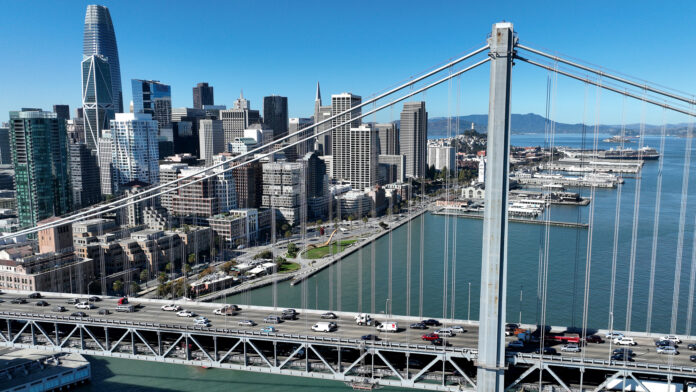Footage from a Thanksgiving Day crash involving a Tesla Model S has been obtained(Opens in a new window) by The Intercept, and it shows the vehicle crossing into the far left lane at high speed, blinker on, before abruptly coming to a stop, causing an 8-car pileup.
The incident happened on the San Francisco Bay Bridge on Nov. 24; The Intercept secured the video through a California Public Records Act request.
The front airbags deployed in the last two cars in the pileup, and all vehicles sustained damage ranging from buckled front hoods to broken bumpers and smashed trunks. The crash injured nine people, including a 2-year-old child, and blocked bridge traffic for an hour.
The driver told the police the vehicle was in Full Self-Driving (FSD) mode before the crash, according to the police report(Opens in a new window), though officers were unable to verify that.
Just two hours before the pileup, Musk celebrated the release of the FSD beta to all Tesla customers in North America; it’s available via a $15,000 over-the-air software update.
However, the name “self-driving” is misleading, as the vehicles are not fully autonomous. (California last month banned Tesla from describing its technology as full self-driving.) The FSD beta released on Nov. 24 (version 11) is considered Level 2 on the autonomous driving scale.
The scale runs from Level 0 to 5, as defined by the Society of Automotive Engineers and adopted by the US Department of Transportation, with Level 5 providing full autonomy, no steering wheel required. Level 2 autonomous driving, which the Tesla reportedly had, still requires a human to have their hands on the steering wheel and intervene as needed.
(Credit: Synopsys)
The police report from the Bay Bridge crash includes a screenshot from the Tesla website, which explains that the company’s Autopilot system, of which FSD is a component, “is intended to be used only with a fully attentive driver.” The car is programmed to issue alerts if it detects the driver has taken their hands off the steering wheel, while drivers should be able to disable FSD by steering, applying the brakes, or manually turning it off, the website says.
(Credit: State of California, Department of California Highway Patrol, Traffic Crash Report)
That said, the Bay Bridge crash may not be related to FSD. Teslas have extensive software systems that dictate the vehicle’s functions, and “phantom braking,” or the vehicle slamming on the brakes in the face of system-perceived hazards, is a known issue. In February 2022, the National Highway Traffic Safety Administration (NHTSA) said it had received 107 complaints of phantom braking in the previous three months from Tesla owners, compared with only 34 in the preceding 22 months, The Washington Post reported(Opens in a new window).
Recommended by Our Editors
The NHTSA is currently investigating the Bay Bridge crash, CNBC reported(Opens in a new window) last month.
When Software Fails, Who’s to Blame?
As more vehicles become autonomous and rely on software, legal questions regarding culpability between the driver, insurance companies, and car companies are bound to emerge. “There is a lot to iron out before the autonomous technologies can operate unfettered and worry-free on our roadways,” reads a post(Opens in a new window) from the American Bar Association.
“What is the insurance and product liability impact? How will privacy, security and customer data be handled? What happens when a vehicle experiences a data breach or cyberattack?” the ABA asks. “The truth is, while we know the technology is coming down the pipeline – and soon – we still have a lot of questions to resolve before we can make this technology available to all.”
Notably, Mercedes received approval(Opens in a new window) from the state of Nevada for Level 3 self-driving to vehicles this month, the first automaker to do so in the US. At a roundtable at CES last week, Markus Schäfer, Mercedes-Benz CTO, said the company will be responsible for any incidents that occur when the system is on—not the driver. He also noted that Mercedes has Level 3 approval in Europe, and was the first automaker to gain approval there as well.
Get Our Best Stories!
Sign up for What’s New Now to get our top stories delivered to your inbox every morning.
This newsletter may contain advertising, deals, or affiliate links. Subscribing to a newsletter indicates your consent to our Terms of Use and Privacy Policy. You may unsubscribe from the newsletters at any time.
Hits: 0


















